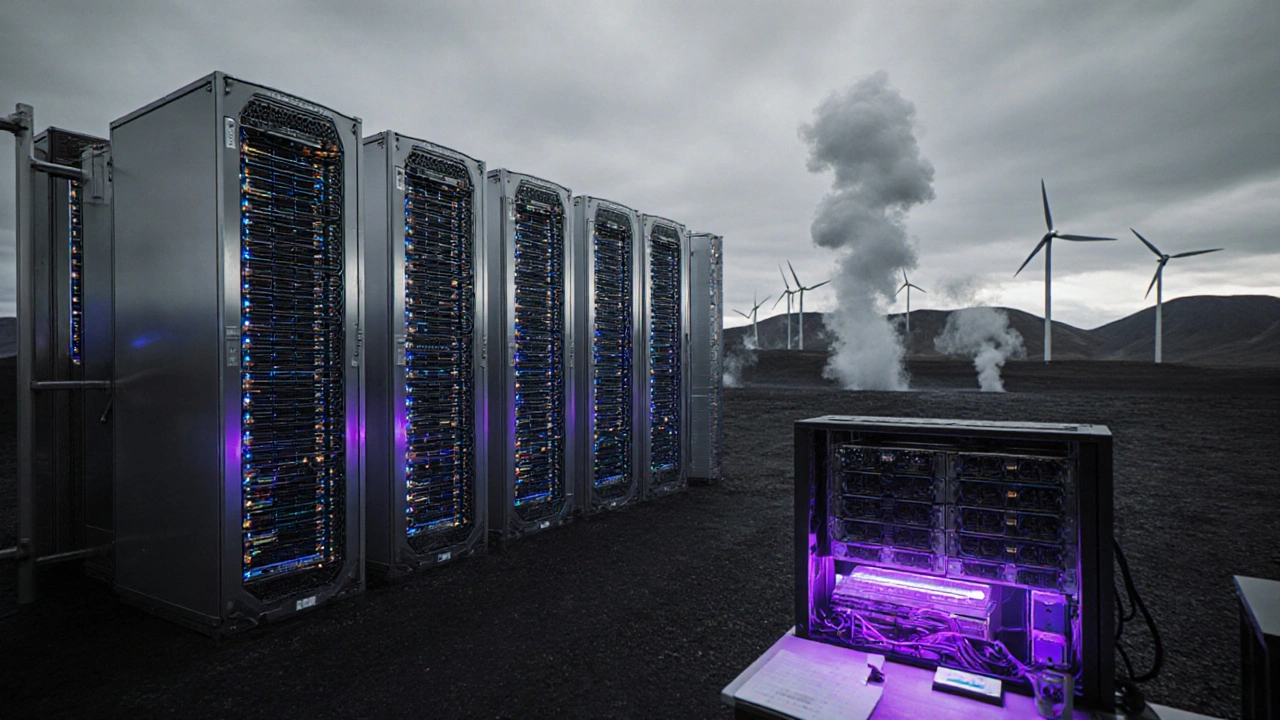Crypto Mining Explained: How It Works, Risks & Rewards
Quick Summary
- Crypto mining validates transactions and creates new coins by solving mathematical puzzles.
- The process relies on crypto mining hardware like ASICs or GPUs and a lot of electricity.
- Profitability depends on hash rate, difficulty, coin price and power costs.
- Joining a mining pool spreads risk but also shares rewards.
- Regulatory and environmental concerns are shaping the future of mining.
What Is Crypto Mining?
Crypto mining is a computational process that secures a blockchain network by verifying transactions and adding them to a public ledger, while simultaneously creating new cryptocurrency units as a reward for the work performed. In plain English, think of it as a massive, distributed puzzle‑solving contest where participants (miners) race to be the first to find a solution. The winner gets a handful of fresh coins and the network moves forward.
The term "crypto" comes from Cryptocurrency a digital or virtual asset that uses cryptography for security and operates on a blockchain. While all cryptocurrencies have a blockchain, not all of them rely on mining; some use alternative consensus mechanisms like Proof of Stake.
How the Mining Process Works
The mining cycle can be broken down into four clear steps:
- Collect Transactions: Miners gather pending transactions from the network’s mempool.
- Form a Block: These transactions are bundled into a candidate block.
- Solve the Puzzle: Using the Proof of Work a consensus algorithm that requires miners to perform computational work to find a hash below a target difficulty algorithm, miners repeatedly hash the block header with a changing nonce until the resulting hash meets the network’s difficulty target.
- Broadcast & Reward: The first miner to find a valid hash broadcasts the block. The network verifies it, adds it to the chain, and the miner receives the block reward plus any transaction fees.
Because the puzzle is deliberately hard, the only way to increase chances of winning is to throw more computational power at it-measured as hash rate.
Core Technologies Behind Mining
Two pillars make mining possible:
- Blockchain: A Blockchain an immutable, linked list of blocks that stores transaction data across a distributed network ensures that once a block is added, it cannot be altered without redoing the work for that block and all subsequent ones.
- Proof of Work (PoW): The consensus rule that forces miners to perform expensive calculations, securing the network against tampering.
These two work together: the blockchain records the proof each miner provides, and PoW guarantees that altering a block would require re‑mining every following block, which is computationally infeasible.

Major Cryptocurrencies That Use Mining
While Bitcoin is the poster child, several other coins still depend on PoW:
| Coin | Algorithm | Block Reward | Typical Hardware |
|---|---|---|---|
| Bitcoin the first and largest cryptocurrency, using SHA‑256 hashing | SHA‑256 | 6.25BTC (as of 2025) | ASIC miners |
| Litecoin a Bitcoin fork that uses the Scrypt algorithm | Scrypt | 12.5LTC | ASIC/GPU |
| Monero a privacy‑focused coin using RandomX, designed for CPU mining | RandomX | 2XMR | CPU |
Ethereum switched to Proof of Stake in 2022, but its legacy PoW chain (Ethereum Classic) still runs, keeping the GPU market alive.
Mining Hardware Overview
The right hardware can make or break a mining operation. Below is a quick comparison of the three main categories.
| Hardware | Typical Hash Rate (per unit) | Power Consumption | Best For |
|---|---|---|---|
| ASIC Miner Application‑Specific Integrated Circuit built solely for a particular hashing algorithm | 100TH/s (SHA‑256) | 3kW | Bitcoin, Litecoin |
| GPU Graphics Processing Unit, versatile for many algorithms like Ethash, KawPow | 100MH/s (Ethash) | 250W | Ethereum Classic, Ravencoin |
| CPU Central Processing Unit, generally slower but useful for RandomX and similar algorithms | 5KH/s (RandomX) | 65W | Monero |
When choosing hardware, consider not just raw hash rate but also electricity cost per gigahash and initial capital outlay.
Costs, Energy Consumption, and Environmental Impact
Mining is energy‑hungry. A single high‑end ASIC can consume as much power as an average household. Global estimates in 2024 placed Bitcoin’s annual electricity use near 150TWh, comparable to the whole of Argentina.
To keep expenses in check, miners calculate profitability using the formula:
Profit = (Block Reward + Fees) × Coin Price - (Power Consumption × Electricity Rate) - Hardware Depreciation
Many operations relocate to regions with cheap or renewable energy-e.g., Iceland’s geothermal power or Texas’s wind farms-to improve margins and reduce carbon footprints.

How to Get Started Safely
- Set Up a Wallet: Choose a reputable non‑custodial wallet that supports the coin you intend to mine.
- Choose Hardware: Based on budget and target coin, decide between ASIC, GPU, or CPU.
- Pick a Mining Pool: Pools like Slush Pool one of the oldest Bitcoin mining pools, offering a PPS+ payout model spread risk and provide steadier payouts.
- Configure Software: Download the official miner (e.g.,
CGMinerfor ASICs,Claymorefor GPUs) and point it to the pool’s URL. - Monitor Performance: Use tools like MiningStat a web dashboard that tracks hash rate, temperature, and profitability in real time to tweak settings.
Always keep firmware updated to protect against known exploits, and consider a UPS (uninterruptible power supply) to avoid abrupt shutdowns that could corrupt data.
Common Pitfalls & Risks
- Scams: Beware of “cloud mining” services promising high returns with no hardware; many are Ponzi schemes.
- Volatility: A sudden drop in coin price can turn a profitable operation into a loss-maker overnight.
- Regulation: Some jurisdictions (e.g., China) have banned mining outright; staying informed on local laws is crucial.
- Hardware Failure: Constant high temperatures can shorten component lifespan; implement proper cooling.
Future Outlook
While PoS is gaining traction, PoW isn’t disappearing entirely. New projects are experimenting with hybrid models that combine PoW’s security with PoS’s energy efficiency. Additionally, advances in ASIC design are improving energy‑per‑hash ratios, making future mining potentially greener.
For hobbyists, the growth of decentralized finance (DeFi) and NFTs on PoW chains offers niche opportunities-especially on networks that reward miners with native tokens beyond the primary coin.
Frequently Asked Questions
Is crypto mining legal everywhere?
Legality varies by country. Most places allow it, but some-like China and Kazakhstan-have imposed bans or heavy taxes. Always check local regulations before setting up a rig.
How much can I earn from mining a single GPU?
Earnings depend on the coin, its price, network difficulty, and electricity cost. As of October 2025, a mid‑range RTX 4090 mining Ethereum Classic can net $1-$2 per day after power costs in the US.
What’s the difference between a mining pool and solo mining?
Solo mining means you try to find blocks alone, which can be rewarding but very unpredictable. Mining pools combine the hash power of many miners, sharing rewards proportionally, leading to steadier income.
Do I need an internet connection 24/7?
Yes. A constant connection ensures your miner receives new transactions, submits found blocks instantly, and stays synced with the network.
Can I mine on a laptop?
It’s technically possible, but laptops lack the cooling and power efficiency needed for profitable mining. You’ll likely burn out the hardware before seeing any profit.





